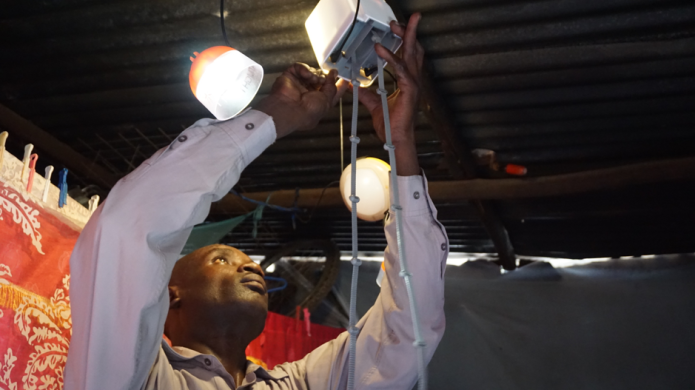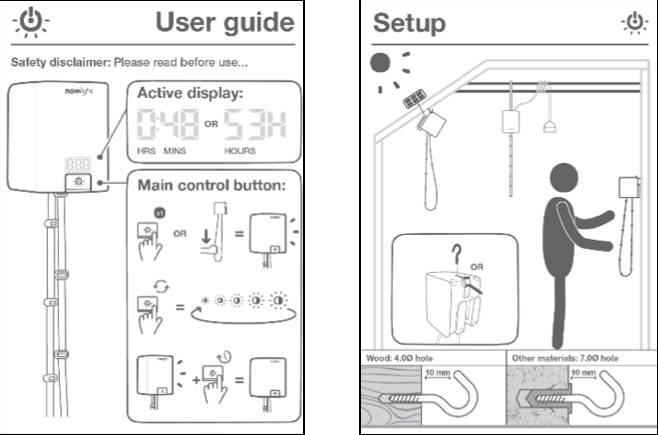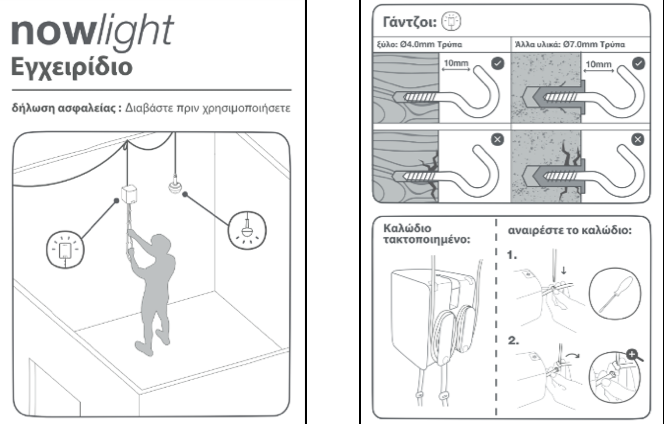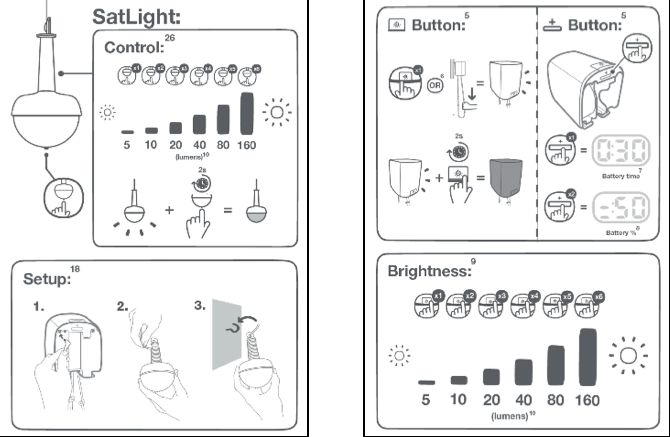What do you do when you buy a new product, take it home and open the box? My usual approach is start playing with the product immediately. If an instruction manual is supplied, it will get ‘filed’ in a draw for future reference.
It’s great when a product is so intuitive and easy to use that you don’t need to look at the instructions, because everything just works exactly as you would expect it to. As such, ensuring that nowlight is easy to use has been at the front of our minds during the product design and development process.
Yet situations will inevitably arise where nowlight users will need to consult some instructions. When that happens, it’s important that those instructions are clear and easy to follow. But as we have learned, arriving at a simple set of instructions is likely to be the outcome of a long and complex process! In this update, we share what it took to create the nowlight user manual.

A section of the GravityLight manual
From the experience of creating our first product GravityLight, we knew that we wanted to focus on using visuals rather than text to explain how nowlight functions. Our goal is to see nowlight used all over the world. As such, we need to make sure that anyone can understand the instruction manual, regardless of the language they speak or whether they can read.
However, we received feedback that the user manual for GravityLight, which was a single sheet of paper, did not provide sufficient information for some users. We knew that we needed to create a more detailed user guide for nowlight, but without providing an overwhelming amount of information.
We decided at an early stage that we had to develop the user manual in parallel with the product itself. We couldn’t just create the manual as an afterthought once we had done everything else.

User trials in Kenya helped us understand what information should be included in the user manual
You may recall from our last update that we conducted user trials in Kenya in December 2017. From these and other trials, we gained an opportunity to observe how users interacted with nowlight. This provided us with the insights we needed to create a first draft of the nowlight user manual.

Two pages from an early draft of the user manual
One of the surprising outcomes of this process was that early drafts of the user manual became a vehicle for discussing the development of the product itself. For example, in meetings we can work through the user manual and discuss the status of the features described on the different pages.
As the nowlight product evolved we continued to hold regular reviews to update the content of the manual. Even once the design and functionality of the product had been finalised, it still took many iterations to find the most effective way of presenting the information.
An easy trap to fall into when creating a user manual, is to produce something that makes perfect sense to its authors, who already understand the product and how it works, but is inscrutable to anyone who is encountering a product for the first time. For this reason, we regularly invited other people to read the manual and use it with our prototypes.

The nowlight manual: it’s all Greek to me…
To make sure that they would understand how to use nowlight using only the visual content, we translated all the written content in the manual into Greek (a language not spoken by any of our test subjects). This mimics the experience that someone will have if they don’t speak English or any of the languages that we will supply translations for.
Through this process we gained a lot of useful insights. Some of these led to big changes in the way we presented information. For example, we received feedback that early versions of the manual tried to present too much information on each page.
We also made some very small, though still important, changes to the user manual. A personal favourite of mine was the request that we make clock icons more ‘clocky’ because it wasn’t obvious what they were!

A sneak preview of the finished manual…
After a lot of work, we’ve reached a point where the user manual is more or less finished and we’re really happy with it. That said, we’re sure there are still lots of ways it could be improved. In fact, we hope that all of you will play a role in making it better over time!

